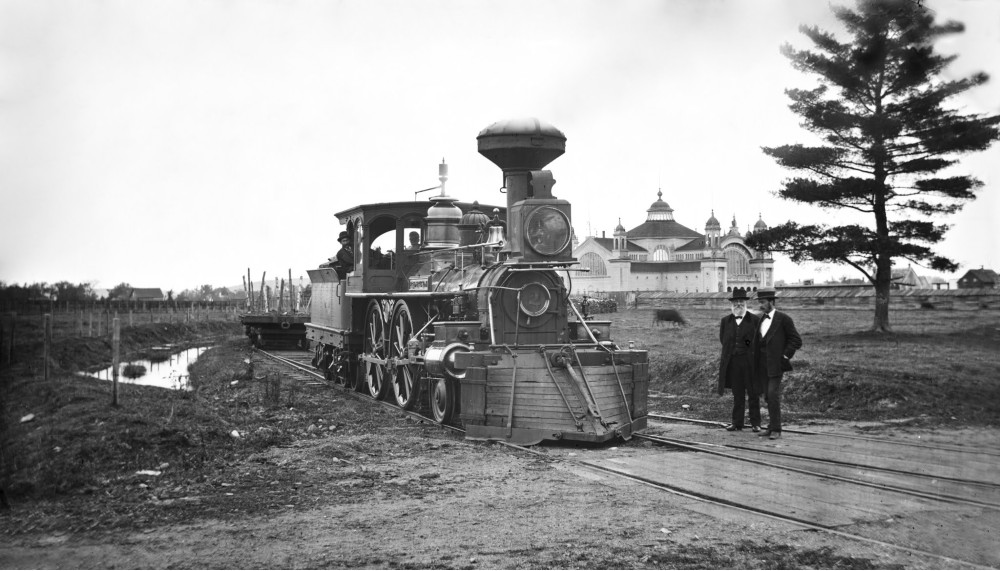John Hamilton

No. 2 Engine of the Fredericton Branch Railway (equipped with a Temple & Miller Flanger) at York Street crossing, Fredericton, 1873-1877.
Courtesy of Provincial Archives of New Brunswick, Taylor Photograph, P5-373w.
Hamilton’s “Temple & Miller Flanger” contributed greatly to the safety and efficiency of winter travel on railway lines all across Canada.
John Hamilton (born c. 1853) was a very inventive genius. He stood six feet tall, and worked as a blacksmith in the engine house and machine shop of the Fredericton Railway Company in Gibson (present-day South Devon).
He was a well-respected employee and co-worker, who in 1873 was the true inventor of the “Temple & Miller Flanger.” His invention was a simple yet effective design, consisting of a pair of iron blades that could be attached to the cowcatcher on the front of a locomotive. The metal plates could be raised or lowered by the engineer as needed, thus acting like a snowplough of sorts and was used to scrape ice and snow off railway tracks in winter.
Unfortunately, John Hamilton did not receive credit for his invention. His supervisor at the time was J. Henry Miller, an engineer with the railroad, and the company President was Thomas Temple, who was also the High Sheriff for York County; both—unknowing to John Hamilton—claimed the patent in their own names. So, Hamilton’s flanger became known as the “Temple & Miller Flanger.” It is said that when John found out what had happened, he tried to hire a lawyer to regain his patent rights; but soon had to abandon his efforts because he did not have enough money to pay the legal fees.
Hamilton’s “Temple & Miller Flanger” became a standard piece of equipment on engine locomotives for many years. Later, more modern models were developed, but these too were based upon Hamilton’s original design.
John Hamilton is a little-known figure in Canadian history, who deserves credit for his invention. His flanger design has contributed greatly to the safety and efficiency of winter travel on Canada’s railway lines.

